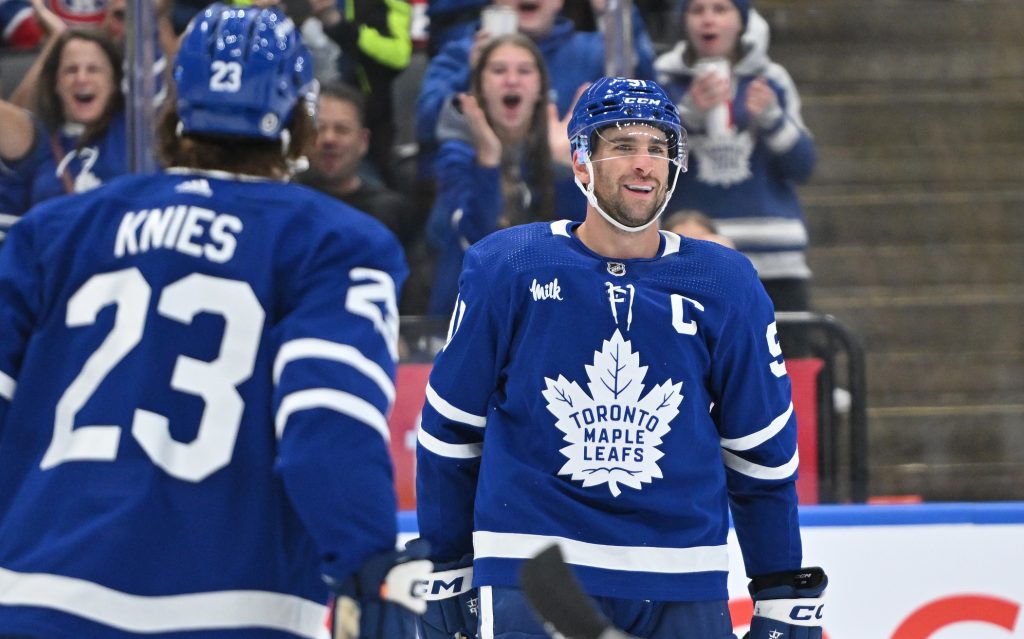
When the Toronto Maple Leafs elected not to renew Brendan Shanahan as team president back in May, the big question was what, if anything, would change under GM Brad Treliving, from messaging to contract structures. As of this writing, free agency hasn’t opened up, but in his first two moves, it sure looks like Treliving is not in the business of handing out money at all costs.
Securing the Core
First came the re-signing of veteran forward John Tavares. It was clear from the very beginning that the 34-year-old wanted to stay in Toronto, but we all knew that was never going to come at the $11 million per season he averaged in his last contract. But getting him at an AAV of $4.39 million for four years was a brilliant piece of negotiation. After scoring 38 goals in 2024-25 and becoming a point-per-game player, a player like Tavares could have easily gotten somewhere in the $7 or $8 million range, especially with the salary cap jumping to $95.5 million for next season.
Once that was done, Treliving’s priority shifted to 22-year-old power forward Matthew Knies. It was clear that the player was going to get a hefty raise from the $925,000 he received from his entry-level contract, but getting that number up to $7.75 million per year for six years was certainly a nice mix of term and security for a player who still has a massive upside following a 29-goal season.
When it’s all said and done, all you have to do is look at the combined salary cap hit of both players. In 2024-25, both players combined for a cap hit of $11,925,000. This upcoming season, that number increases to $12,138,420, an increase of just 1.79 percent for both players, which is quite excellent.
It’s hard to say these two moves alone represent a shift in the way Treliving is going to hand out money, but it’s a promising start. While Tavares could have looked at the open market, many didn’t expect the hometown discount to be as significant as it was. On the flipside, Knies was expected to get paid, but getting the contract to six years gives the Leafs some cost certainty. With the salary cap projected to reach $113.5 million by 2027-28, locking in that term is a shrewd piece of business for sure.
What’s Next for the Leafs?
With these two core pieces locked in at a reasonable price, Treliving’s attention can now turn to the rest of the roster. That leaves the Leafs with approximately $13,570,581 in salary cap space this season to spend on free agents this summer. With Mitch Marner as good as gone, the Leafs will likely use that remaining money to pursue high-impact free agents. It’s clear that Brad Marchand is No. 1 on their list of forwards. They’ll also want to shore up the center position, finding someone who can play at the 2C spot if Tavares eventually drops down to a 3C role.
Of course, there’s also the business of re-signing restricted free agents Pontus Holmberg and Nick Robertson, to whom the Leafs are expected to tender qualifying offers. Once July 1 hits, the Leafs will gain some flexibility when it comes to moving other contracts; players like David Kampf and Calle Jarnkrok could be shipped out in a trade once their signing bonuses are paid out. As Treliving himself said at the end of last season, the goal was to change the team’s DNA. With his first major signings, he’s shown that this change starts with the balance sheet, building a roster that is not just talented, but financially sustainable
JOIN BODOG